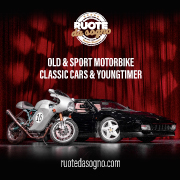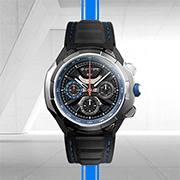Estimated Price: £480,000 - £550,000
The 1973 RS was the Homologation-Series 911 Porsche had to build in order to qualify its pure racing 2.8-litre 911 RSR for Group 5 competition. The FIA mandated that at least 500 examples of the RS were required, so Porsche set to work. Two versions were offered; both based on the 1973 911S 2.4 coupe: the Lightweight/Sport option M471 was the racing-oriented basis for the RSR, while the Touring option, package M472, retained much of the interior trim and features of the standard car. Both differed visually from the 911S with rear quarter panels widened to accept seven-inch Fuchs alloy wheels, and a distinctive fibreglass front bumper with space to install an auxiliary oil radiator if desired. The rear bumper was steel on the Touring coupes and fibreglass on the Lightweights. The engine covers were also fibreglass, reinforced with balsa wood strips, and nearly all RSs sported the iconic "ducktail" spoiler that had been demonstrated in both wind-tunnel and track testing to greatly reduce rear-end lift and thus improve stability at higher speeds. A small number of Touring versions were delivered without the rear spoiler, but most of those were subsequently retrofitted by their owners. The Lightweight RS was fitted with thinner steel body panels, specially-made thinner window glass, and a stripped interior with racing bucket seats.
The heart of the new RS was a new and much more powerful engine. The standard 190bhp 2.4 of the 911S was given larger cylinders with 90mm pistons, taking the displacement to a tad under 2.7-litres. The cylinder bores were coated with a new anti-friction material called Nikasil, which had been developed in Porsche's racing department to allow aluminium pistons and cylinders to co-exist. With a compression ratio of 8.5:1 and Bosch mechanical fuel injection, the new engine developed a lusty 210bhp at 6300 rpm along with 202 foot-pounds of torque at 5100 rpm. The RS retained Porsche's proven Type 915 five-speed manual transaxle and powerful four-wheel disc brakes. The fully-independent suspension featured McPherson struts, longitudinal torsion bars, and an anti-roll bar, while the independent rear suspension used trailing arms with transverse torsion bars, tubular shock absorbers, and an anti-roll bar. This impressive package provided the lucky owner with a car that offered brilliant acceleration (0-60 in 5.5 seconds) and a maximum velocity of 149 mph with excellent stability and road manners.
- Body TypesOther
- Transmission
- Exterior ColourOther
- Interior Colour











































